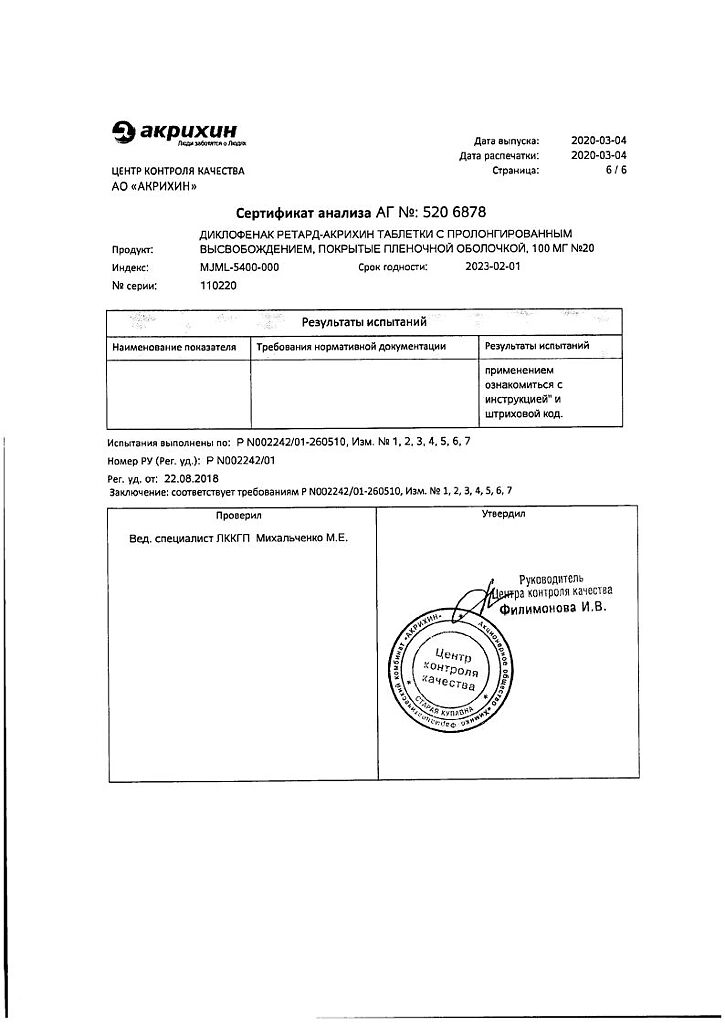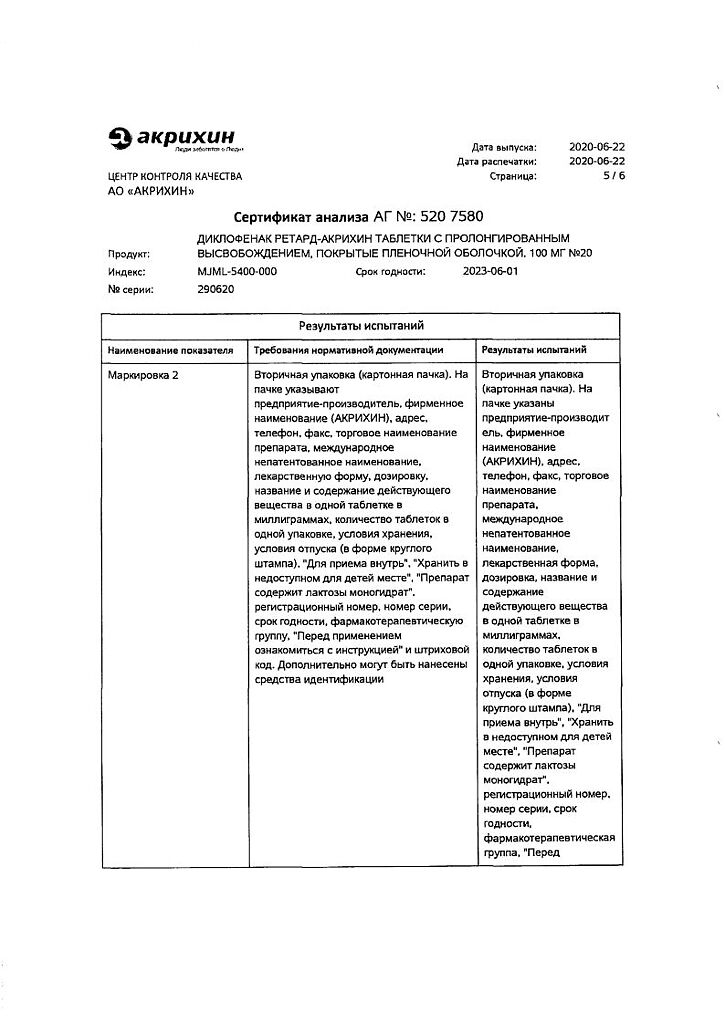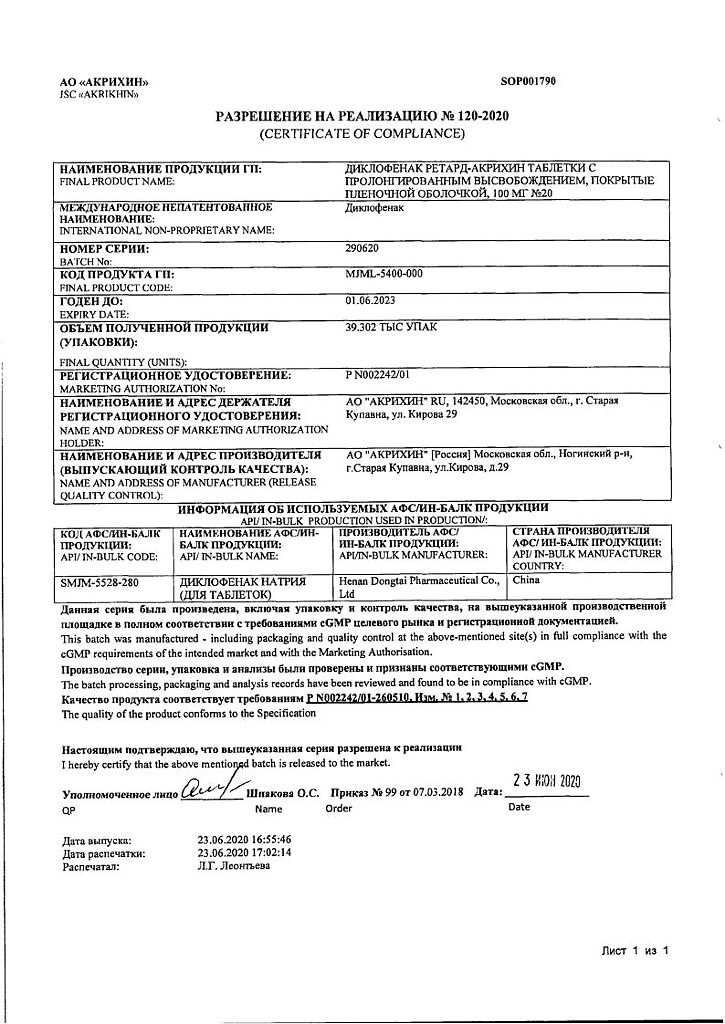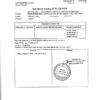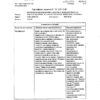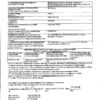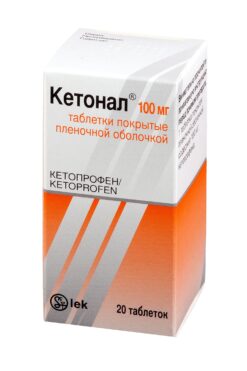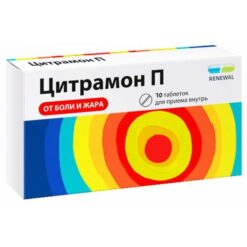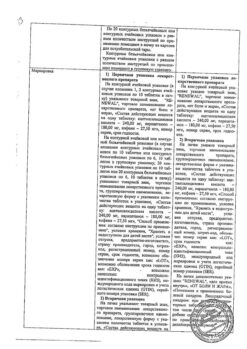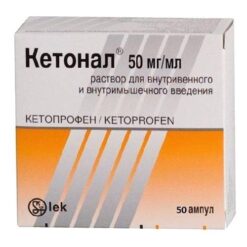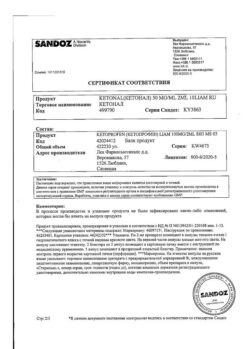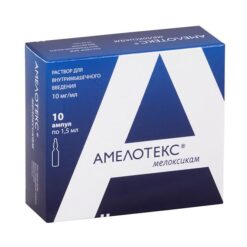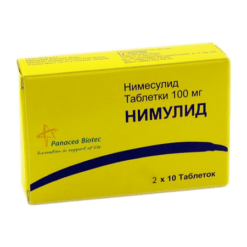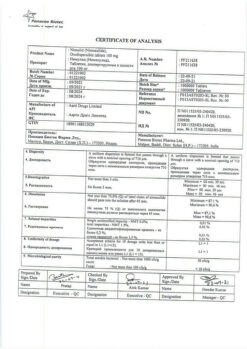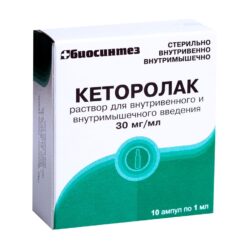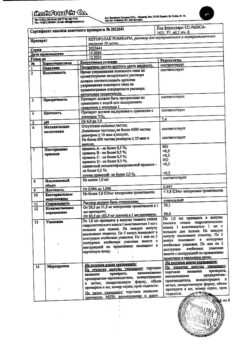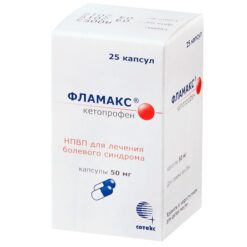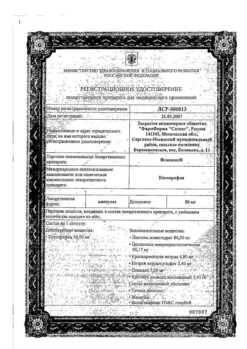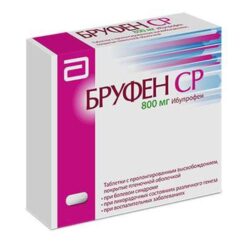No products in the cart.
Diclofenac retard-Acrichin, 100 mg 20 pcs
€1.05 €0.87
Out of stock
(E-mail when Stock is available)
Description
Diclofenac retard is a nonsteroidal anti-inflammatory drug (NSAID), a derivative of phenylacetic acid; it has anti-inflammatory, analgesic and antipyretic effects.
Inhibiting cyclooxygenase 1 and 2 (COX1 and COX2) indiscriminately, it disrupts arachidonic acid metabolism, reduces the amount of prostaglandins in the inflammation focus. It is most effective for pain of inflammatory nature. Like all NSAIDs, the drug has anti-aggregant effect. In rheumatic diseases, anti-inflammatory and analgesic effect of diclofenac contributes to a significant reduction in the severity of pain, morning stiffness, joint swelling, which improves the functional state of the joint. In case of injuries, in post-operative period diclofenac reduces pain and inflammatory edema.
Pharmacokinetics: Absorption is fast and complete. Food slows the rate of absorption by 1-4 h and reduces the maximum concentration (Cmax) by 40%. As a result of delayed drug release, Cmax in plasma is lower than that of short-acting drugs (LS); however, it remains high for a long time after administration. Cmax is 0.5-1.0 mcg/ml, time to reach maximum plasma concentration (TCmax) is 5 h after administration of 100 mg long-acting tablets.
There is no change in pharmacokinetics of diclofenac on repeated administration. It does not accumulate if the recommended interval between meals is observed.
Bioavailability – 50%. Binding with plasma proteins – more than 99% (most of it is bound with albumin). It penetrates into breast milk and synovial fluid; Cmax in synovial fluid is observed 2-4 hours later than in plasma. Period of half-life (T1/2) from synovial fluid – 3-6 h (concentration of the drug in synovial fluid 4-6 h after administration is higher than in plasma and stays higher during 12 h).
50% of the active substance is metabolized during the “first passage” through the liver. Metabolism occurs as a result of multiple or single hydroxylation and conjugation with glucuronic acid. The enzyme system of cytochrome P 450 CYP2C9 is involved in metabolism of the drug. The pharmacological activity of the metabolites is less than that of diclofenac.
The systemic clearance is 206 ml/min. T1/2 from plasma is 1-2 hours. 60% of the administered dose is excreted as metabolites through the kidneys; less than 1% is excreted unchanged, the rest of the dose is excreted as metabolites in the bile.
In patients with significant renal insufficiency (creatinine clearance (CK) less than 10 ml/min) excretion of metabolites in bile is increased, while there is no increase of their concentrations in blood.
In patients with chronic hepatitis or compensated liver cirrhosis pharmacokinetic parameters do not change.
Diclofenac penetrates into the breast milk.
Indications
Indications
Active ingredient
Active ingredient
Composition
Composition
Active ingredient:
diclofenac sodium 100 mg.
How to take, the dosage
How to take, the dosage
Adults are recommended to take 50 to 150 mg of diclofenac per day, divided into 2-3 separate doses. In the absence of other prescriptions, it is recommended to take 100-150 mg per day as initial therapy and 75-100 mg divided into 2-3 separate doses for long-term therapy.
Children over 6 years of age are prescribed diclofenac at a dose of 2 mg/kg body weight, with the daily dose also divided into several doses.
Interaction
Interaction
Concomitant use of Diclofenac with digoxin, phenytoin or lithium drugs may increase plasma concentrations of these drugs; with diuretics and hypotensive agents – possible decrease in the effect of these drugs; with potassium-saving diuretics – possible development of hyperkalemia; with acetylsalicylic acid – decrease of plasma concentration of diclofenac and increased risk of side effects.
Diclofenac may increase the toxic effects of cyclosporine on the kidneys.
Diclofenac may cause hypo- or hyperglycemia, therefore concomitant use with hypoglycemic agents requires control of blood glucose concentration.
If methotrexate is used within 24 hours before or after taking Diclofenac, methotrexate concentration may increase and its toxic effect may be increased.
When concomitant use with anticoagulants, regular monitoring of blood clotting is required.
Special Instructions
Special Instructions
Cautiously use the drug simultaneously with other NSAIDs.
Influence on driving and operating ability
Due to the fact that when using the drug in high doses, side effects such as dizziness and feeling of fatigue may develop, in some cases, the ability to drive a car or other moving objects is impaired. These phenomena are intensified with concomitant use of alcohol.
Contraindications
Contraindications
– Gastrointestinal erosive and ulcerative lesions in the acute phase;
– “aspirin triad”;
– hematopoiesis disorders of unclear etiology;
– hypersensitivity to diclofenac and components of the dosage form used, or other NSAIDs.
Side effects
Side effects
Digestive system disorders:Nausea, vomiting, epigastric pain, anorexia, flatulence, constipation, gastritis up to erosive with bleeding, increased transaminase activity, drug-induced hepatitis, pancreatitis.
With the urinary system: interstitial nephritis.
CNS side: headache, dizziness, disorientation, agitation, insomnia, irritability, fatigue, aseptic meningitis.
In the respiratory system: bronchospasm.
From the hematopoietic system: anemia, thrombocytopenia, leukopenia, agranulocytosis.
Dermatological reactions: eczema, erythema, eczema, hyperemia, erythroderma, photosensitization.
Allergic reactions: erythema multiforme, Lyell’s syndrome, Stevens-Johnson syndrome, anaphylactic reactions, including shock.
Local reactions: Burning, infiltrate formation, and necrosis of adipose tissue may occur at the injection site.
Other: fluid retention in the body, edema, increased BP.
Overdose
Overdose
Symptoms:dizziness, headache, hyperventilation of the lungs, blurred consciousness, vomiting, bleeding from the gastrointestinal tract, diarrhea, tinnitus, seizures, in significant overdose – acute renal failure, hepatotoxic effect.
Treatment: gastric lavage, administration of activated charcoal. Symptomatic therapy is aimed at eliminating the increase in BP, impaired renal function, seizures, gastrointestinal irritation, respiratory depression. Forced diuresis, hemodialysis are ineffective (due to significant binding to proteins and intense metabolism).
Similarities
Similarities
Additional information
| Conditions of storage | Store in a dry, dark place at temperatures under 25 C. Keep out of the reach of children. |
|---|---|
| Manufacturer | Akrihin HFC JSC, Russia |
| Medication form | sustained release tablets |
| Brand | Akrihin HFC JSC |
Related products
Buy Diclofenac retard-Acrichin, 100 mg 20 pcs with delivery to USA, UK, Europe and over 120 other countries.


